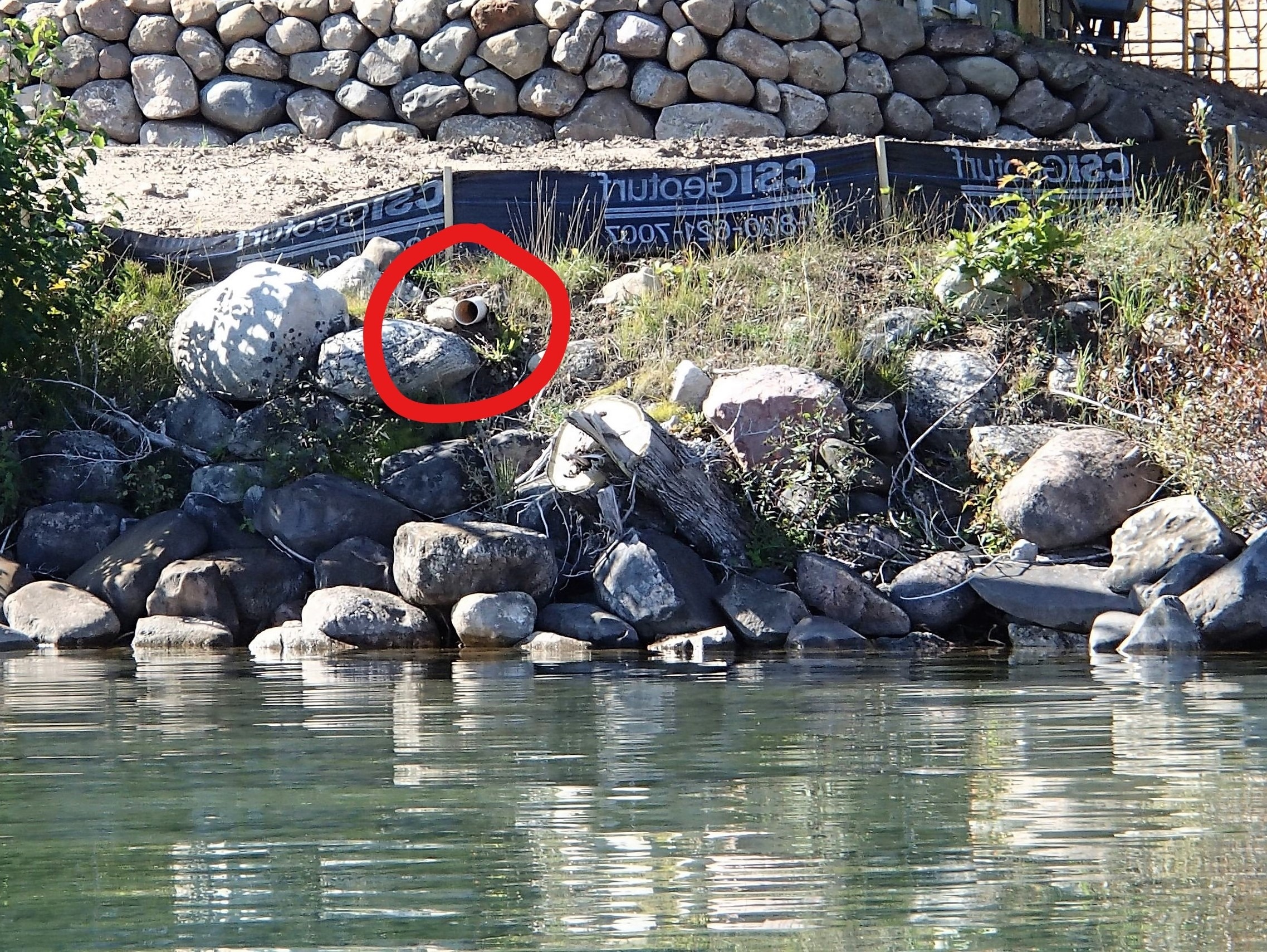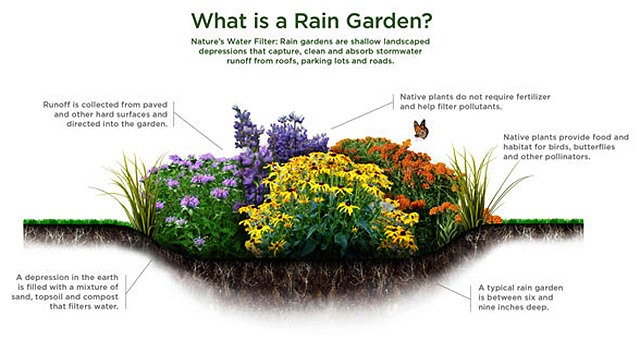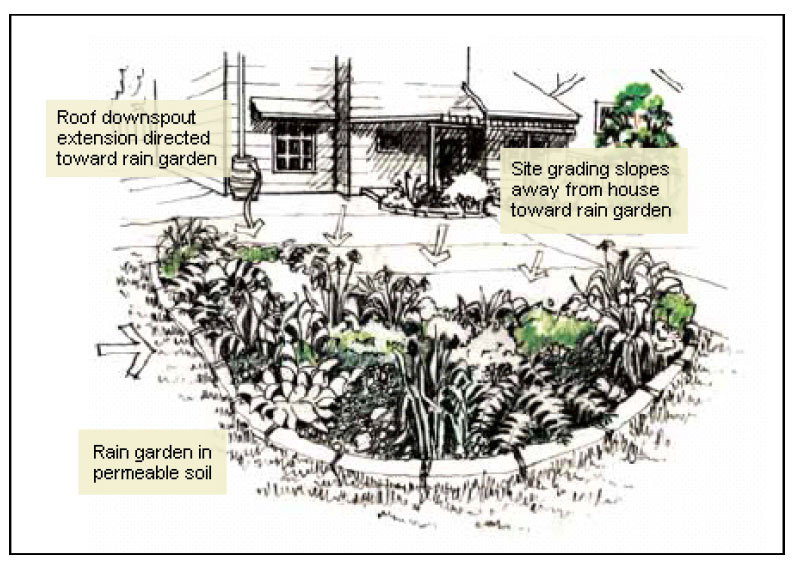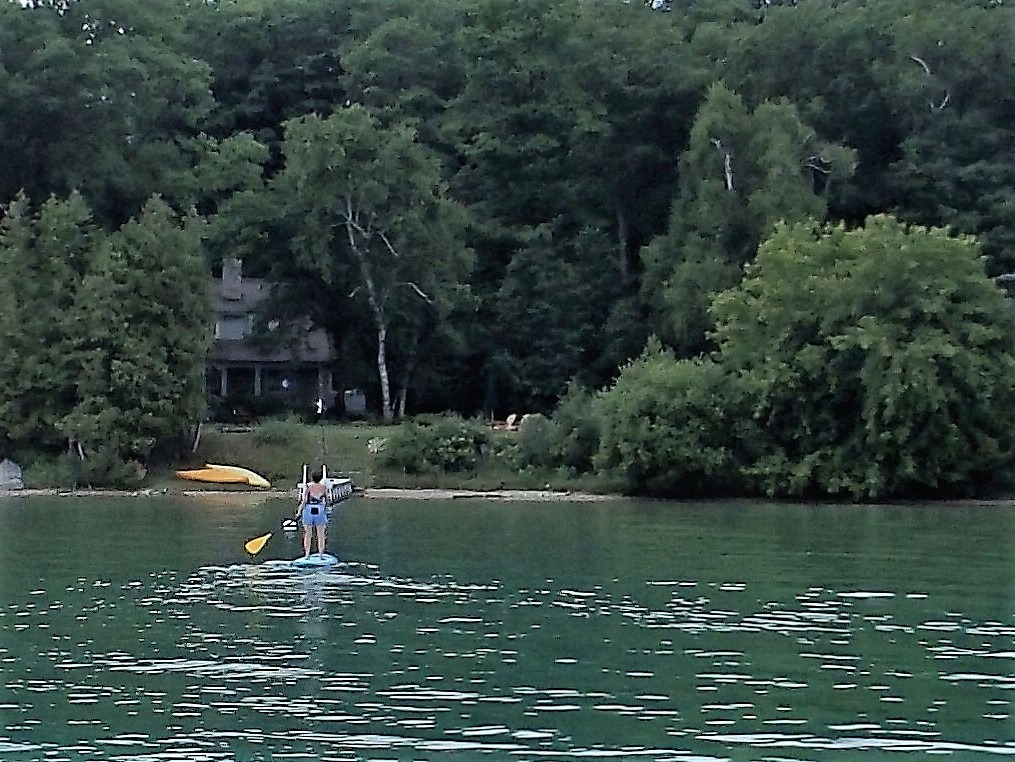TRUE Blue Landscaping
Install Rain Gardens Near Perimeter Drains
Why do we need Rain Gardens?
Rain Gardens trap toxins from your perimeter drain and prevents them from polluting Torch Lake.
The foundation of your home is surrounded by a perforated plastic pipe in a trench lined with small stones. This perimeter pipe drains stormwater away from the foundation and keeps your crawl space or basement dry.
If you have gutters, then the downspouts keep stormwater away from your foundation and may also flow into this perimeter drain.
Typically, the perimeter drain pipe empties into the nearest roadside ditch, stream or flows directly into Torch Lake.
These perimeter drains carry stormwater polluted with airborne toxins such as mercury from coal-burning power plants. These drains are one way toxins enter streams and Torch Lake contaminating fish in Torch Lake.
Direct perimeter pipes into Rain Gardens filled with native plants, instead of directing the pipes into roadside ditches or one of the 40 creeks or Torch Lake.
Native plants have deep roots that trap toxins and prevent them from percolating into our drinking water and into Torch Lake.
Make these areas beautiful by creating a Rain Garden!

Photo: Torch Conservation Center
What is a Rain Garden?
A rain garden is a vegetated depression that catches polluted run-off from roofs and gutters and keeps pollutants from entering Torch Lake.
Rain gardens trap pollutants such as toxic chemicals carried in the air from places far away from Torch Lake.

Image: The Nature Conservance
Benefits to you and our water?
- Keeps toxins out of Torch Lake so they won’t harm fish and aquatic creatures
- Keeps nutrients out of Torch Lake so algae doesn’t grow and change its turquoise color to green
- Keeps sediment out of Torch Lake so it won’t harm fish and aquatic creatures
- Increases rain water infiltration and groundwater recharging our drinking water
- Keeps drinking water safe from toxins
- Provides habitat for more native plants and wildlife.
What can you do?
Protect Torch Lake’s high water quality, one Rain Garden at a time.
Step 1. Determine the best location for your Rain Garden.
Draw a sketch of your property marking the perimeter drain and downspouts.
- Situate it down slope from the perimeter drain outflow or downspouts
- Keep a minimum 10 feet away from your home to protect your foundation
- Don’t put it over a septic field
- Locate in full or partial sun

Image: University of Massachusetts
Step 2. Determine Rain Garden size.
- Calculate the area of the driveway
- Multiply by a number related to the type of soil in the garden
20% for sandy soil
30-35% for loam
45-60% for clay
- Use this area to estimate the Rain Garden size.
These numbers are inflated to ensure the garden can hold as much water as needed.
Step 3. Create a Rain Garden design.
- Often Rain Gardens are longer than they are wide and positioned perpendicular to the slope of yard
- Lay out a hose to set the perimeter of your Rain Garden
- Group plants in odd numbers
If your Rain Garden will be located with 50 feet of a stream or the lake, then you’ll need a permit from the Antrim County Soil Erosion Office in Bellaire.
Stop by the Antrim Conservation District office on Stover Road due east of Bellaire. Or call (231) 533-8363.
Step 4. Pick your plants based on the garden conditions.
- Sunny or Shady
- Dry or Damp Soil
Select Native Plants from this list.
Step 5. Make sure the area for the rain garden is safe for digging.
- Call Miss Dig at 811 or 1-800- 482-7171 to determine locations of underground gas lines, electrical lines, internet cables or sprinkler lines
Step 6. Remove turf grass and dig 4-8 inches deep.
Use soil to build berms
Step 7. Line with a layer of 2-4 inches of loose, small or pea gravel to speed up rainwater infiltration time.
Step 8. Add a mixture of sand, compost and peat moss to your soil.
Mix well and cover the gravel
- A good soil mix for rain gardens is 50-60% sandy loam, 50-40% compost
Do not use topsoil. This is important to prevent compaction of soil.
Fill the prepared garden area with water to make sure it drains in the directions you want it and soaks into the soil within 24 hours.
Step 9. Install plants.
Step10. Mulch to keep in moisture in and keep out weeds.
- Use shredded bark, like red pine bark rather than wood chips
- Apply the mulch about 2-3 inches deep
Care for Your Perennial Rain Garden

Photo: Trish Narwold
First Season:
- Water daily first 4 weeks
- Remove weeds
- Replenish mulch
- No need to fertilize or use herbicides or pesticides
- Plants should push out weeds as they mature.
Seasonal Care: Spring
- Keep the edges defined for a well-kept natural appearance
- Prune and remove dead material
- Remove any invasive species that have taken hold
- Add another layer of mulch
Links
Check out this link for more information on Rain Gardens.
Don't just wish that Torch Lake will stay blue.
Choose a water-friendly lifestyle - make a difference!
